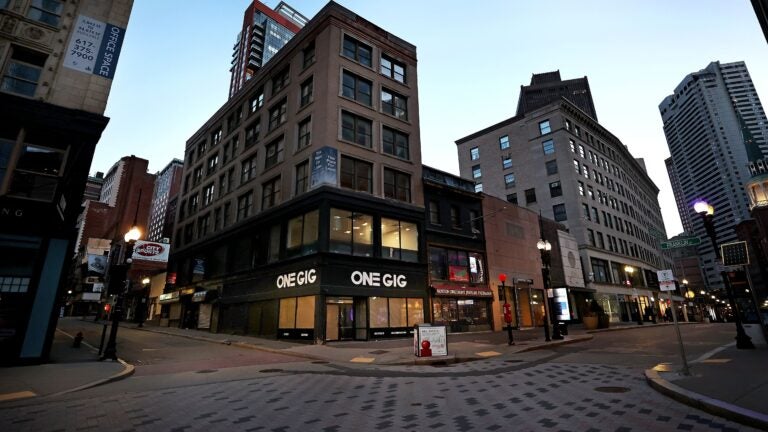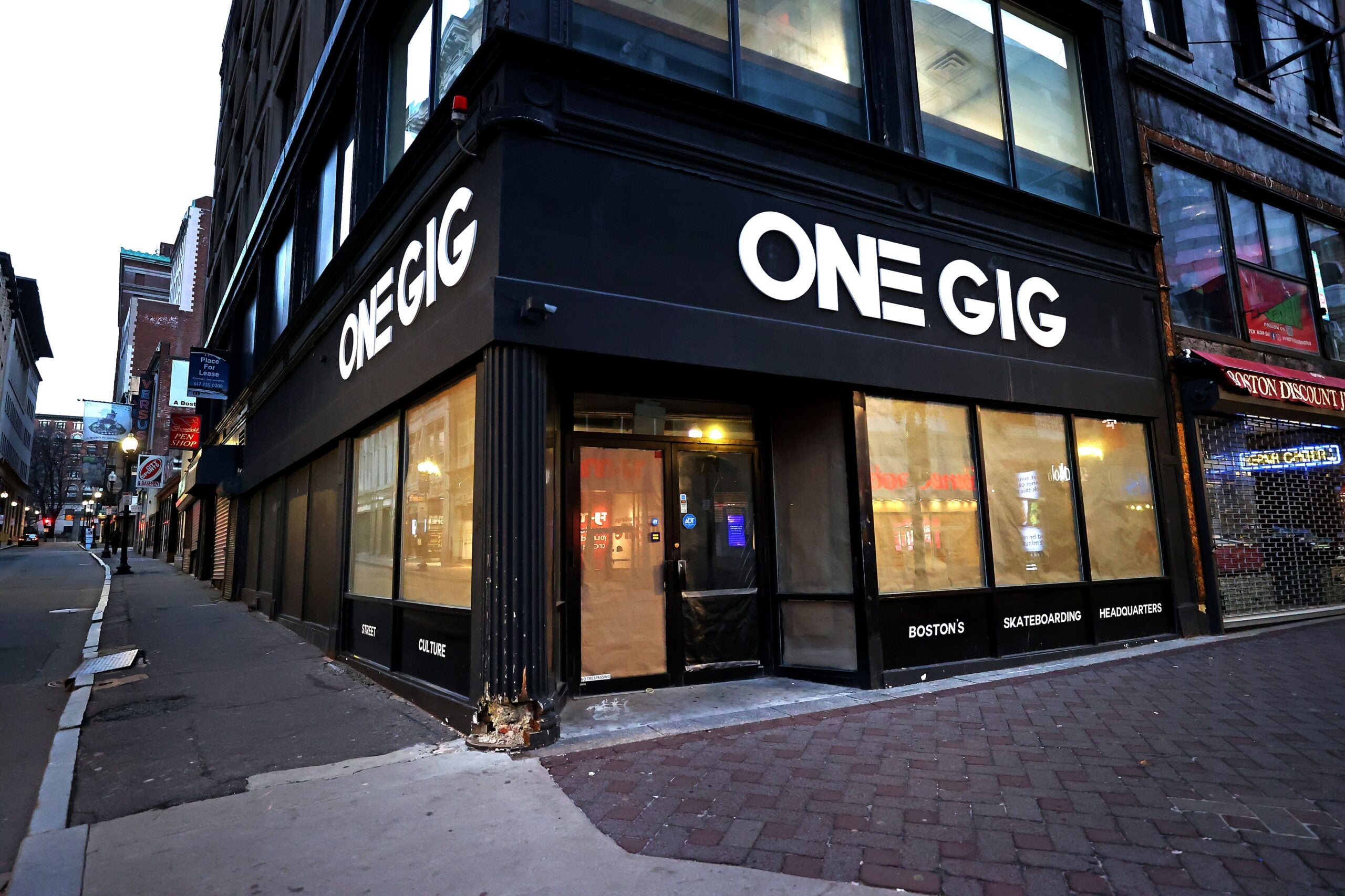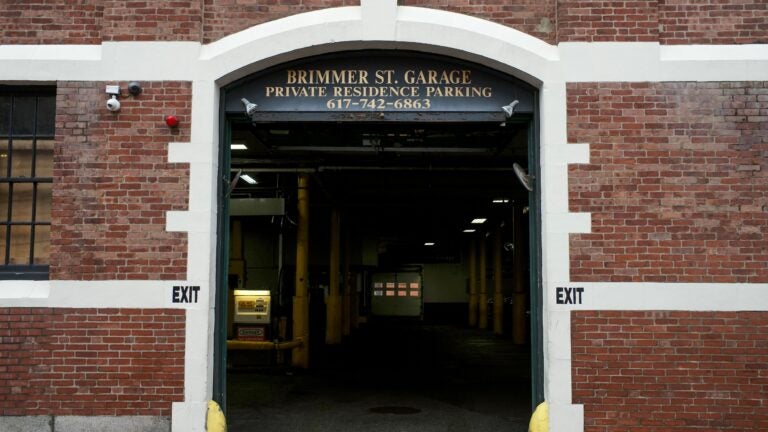What a 417,000-square-foot project at the corner of Bromfield Street could say about the future of downtown
The powers-that-be in City Hall face a crucial decision: Let a developer proceed with office plans there, or force it back to the drawing board for housing instead.

As she tries to bring downtown Boston back to life, Mayor Michelle Wu faces two real estate crises: Too much office space, not enough housing.
Now, an ambitious plan that would revive a prominent block in the heart of the central business district could end up getting caught in the middle of them.
New York-based Midwood Investment & Development has been trying for several years to build a 23-story office tower at the corner of Bromfield and Washington streets. The fate of this 417,000-square-foot project could say a lot about the future of downtown, in a post-pandemic era in which fewer office workers come and go five days a week and vacant storefronts abound. The powers-that-be in City Hall face a crucial decision: Let Midwood proceed with office plans there, or force it back to the drawing board for housing instead.
Today, this spot is an eyesore, mostly papered-up store windows and empty upstairs offices, with a handful of jewelry kiosks the only remaining tenants. Signs for beloved retailers City Sports and Bromfield Pen still hang outside, vestiges of the not-so-distant past when Bromfield thrived as a quirky and vibrant stretch.
Midwood chief executive John Usdan has been nothing if not patient. This represents his third attempt to redevelop the block. His firm invested there in the 1990s before buying the site outright roughly 20 years ago. His first plan for a residential tower was shelved during the Great Recession. A second residential proposal, dubbed One Bromfield, was sidelined over concerns about its parking garage because the two abutting streets have limited vehicular access. Meanwhile, two other luxury residential towers went up in the immediate vicinity: 45 Province opened in 2009 and then the Millennium Tower filled up the once-blighted “Filene’s Hole” across from Bromfield in 2016.
In early March, 2020, Midwood returned to the Boston Planning & Development Agency, this time with an office tower in mind, and with parking erased from the plans. The timing, of course, couldn’t have been worse.
Amid all the market uncertainty caused by the rise of remote and hybrid work, Usdan and his team kept at it. They plowed ahead through BPDA permitting. After four years, they’re close to the finish line.
The big commercial real estate brokerages don’t paint a pretty picture of the office market right now, even though Boston appears to be faring better than many other major US cities. Colliers, for example, reported recently that more than one-fourth of the 36.5 million square feet of office space downtown is available for rent, either directly or through a sublease. Citywide, at least 50 buildings have more than half their space available — five times the number from four years earlier. Colliers researchers’ summary of market conditions? “Weakened significantly.”

So what is Usdan thinking?
There is one bright spot amid this doom and gloom: healthy demand for the shiny and new. Blue-chip tenants are trading up, with the likes of State Street and Deloitte moving into fancy, newly built towers such as One Congress (full), and Winthrop Center (more than halfway there). Tenants that are on the move often pick the highest-quality new space available.
This is right where Midwood wants to play. Citing numbers from brokerage JLL, Midwood noted in a November meeting that the vacancy rate among downtown towers built after 2009 was under 8 percent, compared to 18 percent for older buildings. (Vacancy rates do not include space up for sublease.) The Bromfield project, if fully leased, would bring 1,700 jobs to the corner, along with $5 million-plus in property taxes. The project would be carbon-neutral. It would feature numerous outdoor decks. And it would not be as high as 45 Province, or the much taller Millennium.
But is another office tower what downtown needs today? That November meeting drew strong opinions from both sides.
Supporters, including union reps and others in the real estate world, praised the potential private-sector investment in an area of town that could really use it. The critics largely fell in two camps: those who live in 45 Province, and those who worry in general about more towers casting shadows and wind onto downtown’s historic buildings, such as the Old South Meeting House and Old Corner Bookstore building. Tony Ursillo, a 45 Province resident, argues that the neighborhood should have many more people living there, to give it more of a 24/7 vibrancy, while Revolutionary Spaces president Nat Sheidley expresses concerns that tall towers could chase tourists away from the historic sites.
The people who matter most in this debate work a few blocks away, in City Hall. It’s been pretty quiet on that front, at least publicly. The BPDA declined to comment, as did Midwood. When asked about the project, a spokesperson for Wu pointed to a neighborhood meeting in September where she discussed the broader downtown planning process and expressed skepticism about adding new office space that might create more vacancies in existing buildings while she’s trying to encourage more residential development there.
Going residential isn’t foolproof.
Despite intense demand, housing developments remain tough to finance right now, given the relatively high interest rates.
As many as 23,000 units have won city approval but have not started construction, and a plan floated by Wu last fall to consider tax incentives to help jump-start some of them has not yet materialized. Office-to-residential conversions have not exactly been brisk, either, despite deep tax breaks offered by City Hall for downtown buildings: So far, six applications have been filed, for nearly 220 units in total. And in Midwood’s case, a return to a residential tower would add at least one or two years to the permitting, and also revive the challenge of parking, which is considered a must for high-end housing.
Then there’s this fundamental truth: It’s tough for any public official to force developers to build something they simply don’t want to.
Few people care more about downtown’s future than Michael Nichols, who leads the Downtown Boston Business Improvement District. Nichols knows the mix of uses needs to change, as Wu suggested in a recent speech to the New England Council. But he also is eager for some action with Midwood’s property. Midwood, a BID member, has put together multiple thoughtful proposals for this corner, he said, and has faced an “unusually drawn out” review. He is concerned about the prolonged inactivity but remains hopeful that a green light can come soon.
Downtown certainly could use more residents today. But it also needs this long-forlorn block to be rejuvenated. That first goal could help the second one — or it could end up getting in the way.








Conversation
This discussion has ended. Please join elsewhere on Boston.com